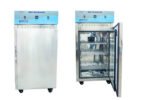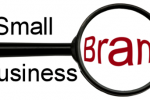How Ultra-Wideband (UWB) Can Help Create Smart Factories? Four landing case references
According to Easybom, micropositioning is essential for digitizing operations through Industry 4.0, Smart Factory and LEAN initiatives. Process optimization and ensuring safety are two key considerations for most industries. Transparency of information throughout the work environment is achieved by linking people, things, time and place to personnel, tools, supplies, goods, machines, and events in real-time.
Current positioning technologies, such as GPS, Wi-Fi and Bluetooth® Low Energy, do not allow for the micropositioning required in precision industries. GPS, accurate to within 10 meters, has enabled the explosive growth of e-commerce in the retail sector and allowed us to throw away those big, bulky map books. wi-fi has helped improve location accuracy. Low-energy Bluetooth can locate to within a few feet under ideal conditions. However industrial and commercial applications require greater accuracy and higher reliability.
Micro location in Industrial Environments
The centimeter-level accuracy of ultra-wideband technology is enabling new levels of both positioning and communication accuracy, putting these previous technologies out of reach. It is the driving technology behind micro-location services, where radio anchors can position tags within a few centimeters. Micropositioning provides information in real time and supports analytics systems to measure, analyze, and alert instantly. Take a look at some of these scenarios that utilize UWB technology.
Processes: In production processes where the distance between materials is small, strategically placed UWB tags and anchors can track materials, goods, processes, and tasks throughout the production process while updating production systems, measuring and calculating efficiencies in real-time, and identifying and even predicting obstacles.
Asset Utilization and Retrieval: Tagged tools or other assets in the plant can be quickly located and employees guided to their use via a highly accurate plant map on the handheld device.
Material Control: Tagged equipment, medical devices, and sensitive items, such as controlled items in hospitals, can be located anywhere in the building and their use clearly monitored.
Ensuring safety: Labels on mechanical equipment such as robotic arms and forklifts, as well as employee badges, allow automated safety systems to track proximity with sub-meter accuracy and real-time precision in order to stop machinery and equipment and alert the appropriate personnel in the event of a breach of safety zone regulations.
Emergencies: UWB tags on employee badges identify each employee and their location to determine if they are out of harm’s way or directed to a rescue location. Location information is relayed to responders on their way to the scene so they can take more effective first aid measures when they arrive, saving valuable time and saving lives.

There are many other potential use cases for improving levels of efficiency and effectiveness, production, safety and security (Figure 1).
Figure 1. UWB in industrial environments can increase levels of efficiency and effectiveness, productivity, safety and security.
How UWB can be so accurate
Industrial and commercial sites are filled with large (often metallic and possibly moving) objects such as walls, vehicles and machinery, as well as electrical noise. gps signals typically do not penetrate industrial structures efficiently. And the radio energy of narrow-band Wi-Fi and low-energy Bluetooth typically fades, reflects back as multipath signals, or is lost in such environments as the distance from the object increases.
UWB is not as susceptible as narrowband Wi-Fi and low-power Bluetooth when it comes to ranging and localization. When communicating between anchors and tags, UWB communication components use very low signaling power to radiate a larger range bandwidth, providing faster pulse rise and fall times than narrowband signals (Figure 2). This approach helps ensure signal integrity, reduces the effects of reflections and noise spikes, and reduces the number of components required for the infrastructure.

Figure 2. Ultra-wideband is not affected by noise spikes that can affect narrowband signals and reduce localization capabilities.
UWB uses time-of-flight (ToF) to measure the distance to the tag (Figure 3). Multiple ToF methods can improve measurement accuracy and reduce infrastructure costs. Two-way ranging (TWR) and time-difference-of-arrival (TDoA) ranging methods eliminate the effects of wall and machine reflections (multiplexing) on signal loudness. Other UWB ranging methods include Phase Difference of Arrival (PDoA) and Reverse TDoA (RTDoA), offering advantages for different types of deployments. These different ranging techniques can be used to identify the distance and direction (vector) to an object.

Fig. 3. Distance calculation with ToF.
Depending on the needs of the microlocation service, different infrastructures can be deployed, different ranging techniques can be implemented, and positions can be determined (calculated).
Within the tags used for navigation themselves, there is a method called Downlink TDoA (DL-TDoA).
Within the infrastructure. when a centralized platform needs to track tags.
With signal integrity and ranging capabilities, UWB can cover greater distances than other positioning and ranging technologies (Figure 4). Strategically placed anchors can report different ranges and vectors to a tagged object, localizing them very accurately in 2D and 3D space.

Figure 4. UWB provides greater coverage and higher accuracy, enabling micropositioning to use fewer components and thus reduce infrastructure.
Supporting the UWB ecosystem in industry and beyond
The FiRa (Fine Ranging) Alliance (www.firaconsortium.org) defines specifications and provides certification for UWB devices. The Alliance supports the use of the UWB ecosystem and interoperability between UWB and other technologies to deliver micro-location services to industry and consumers.
The upcoming new FiRa standard (FiRa 2.0) opens up a wider range of applications for micro-location using UWB. It includes some specific features for industrial applications. It will help to achieve better interoperability between consumer and industrial devices (UWB is already deployed in modern smartphones). It is the first step in incorporating UWB into large-scale real-time location systems (RTLS), enabling indoor and sub-meter accuracy mapping services such as Google Maps.
While FiRa 2.0 will help enable new use cases, the ecosystem anticipates breakthroughs in DL-TDoA solutions. These solutions will enable indoor micro-location navigation with privacy, as only the mobile device knows its location. Such services will soon be available on UWB-enabled smartphones. The deployment of the associated UWB DL-TDoA will be determined by the OEMs of the infrastructure equipment, for example by the deployment of access points that combine UWB anchors with Wi-Fi access points. But in the meantime, lighting and other fixed power devices that can be installed in public or private facilities can also trigger DL-TDoA and activate when UWB-enabled devices are nearby.
UWB solutions have been deployed in a variety of use cases. For example:
UEFA
(A typical (American) soccer field is 105 meters long and 68 meters wide (115 by 74.4 yards). That is 7,140 square meters (nearly 8,540 square yards). Stadiums are generally not roofed. Therefore, placing UWB anchors outside of the perimeter of the field is not practical. Noccela, a provider of microlocation solutions, has developed a UWB-ranging solution that uses both TWR and TDoA ranging methods. In their solution, each anchor can cover 500 square meters (nearly 600 square yards) with an accuracy of two centimeters (0.8 inches) for objects moving at speeds of up to 60 kilometers per hour (over 37 miles per hour). With UWB, they can cover an entire stadium with 16 anchors that are deployed around the perimeter of the stadium and still provide highly accurate 3D positioning.
If using motion analysis software in athletics, micropositioning allows teams to optimize performance. But for the European soccer league, this solution was instrumental in helping European teams stay in the game during the outbreak. With the new coronavirus raging, UEFA players and coaches still have work to do before a vaccine becomes widely available. But they need a way to track social distance and contact between members while practicing in close quarters with other players and team personnel. Without the ability to accurately track individuals, an outbreak of the new crown could lead to a full season shutdown.
The UWB-based microlocation solution provides point-to-point tracking by uploading member tag locations via anchor points. The tracking software then records the location of the person (tag) on the field at any given time. In the event of a contagious infection amongst the team, the manager can immediately identify all potentially infected individuals and isolate them to avoid infecting the entire team.






